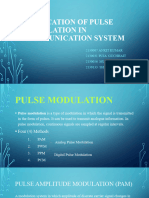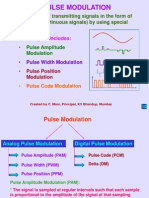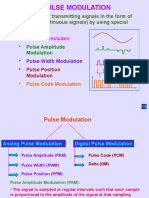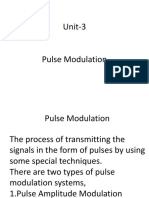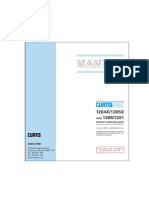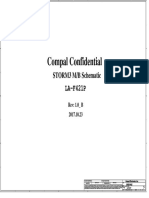0% found this document useful (0 votes)
27 views12 pagesPulse Analog Modulation
The document discusses various types of pulse modulation, including Pulse Amplitude Modulation (PAM), Pulse Time Modulation (PTM), Pulse Position Modulation (PPM), Pulse Code Modulation (PCM), and Delta Modulation. Each type is explained with its advantages, disadvantages, and applications in communication systems. Additionally, it includes a section on frequently asked questions about pulse modulation.
Uploaded by
murtessaahmed9Copyright
© © All Rights Reserved
We take content rights seriously. If you suspect this is your content, claim it here.
Available Formats
Download as DOCX, PDF, TXT or read online on Scribd
0% found this document useful (0 votes)
27 views12 pagesPulse Analog Modulation
The document discusses various types of pulse modulation, including Pulse Amplitude Modulation (PAM), Pulse Time Modulation (PTM), Pulse Position Modulation (PPM), Pulse Code Modulation (PCM), and Delta Modulation. Each type is explained with its advantages, disadvantages, and applications in communication systems. Additionally, it includes a section on frequently asked questions about pulse modulation.
Uploaded by
murtessaahmed9Copyright
© © All Rights Reserved
We take content rights seriously. If you suspect this is your content, claim it here.
Available Formats
Download as DOCX, PDF, TXT or read online on Scribd
/ 12



















